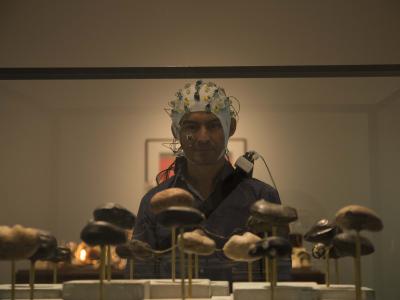Wearable
Reliable fatigue assessment is desired in many different fields and environments. An efficient fatigue evaluation tool is promising in reducing fatal errors and economic loss in industrial settings. This dataset contains electroencephalographic (EEG) signals obtained
from an 8-channel OpenBCI headset, as well as biometric measurements obtained from the Empatica E4 wristband. Signals obtained from the E4 include: Photopletismography (PPG), heart rate, inter-beat interval (IBI), skin temperature and Electrodermic Activity
- Categories:
 1368 Views
1368 ViewsThe Voltammetry-Based Sensing (VBS) methods are extremely interesting due to high specificity in several biochemical applications. Several considerations can be applied to use this method to measure different analytes, and implement efficient and optimized electronic measurement platform for point-of-care diagnostic, in wearable, portable, or IoT systems. The dataset contains the data presented in [1], which proves on real experimental data a method to define the optimized setup to develop efficient and electronic bio-sensing platforms.
- Categories:
 673 Views
673 ViewsIn robotic grasping and manipulation, force feedback is one of the most important factors. In the absence of force feedback, force control and compliant grasping is almost impossible. In this study a novel Vibrational Haptic feedback system is designed. The system gives individual digit awareness of a multipronged robotic gripper to the user. It also gives force level feedback from each fingertip and simultaneous multiple force level feedback, all through one wearable elastic “Vibrational Haptic Band (Vi-HaB)”.
- Categories:
 240 Views
240 Views
- Categories:
 238 Views
238 ViewsRecent advances in scalp electroencephalography (EEG) as a neuroimaging tool have now allowed researchers to overcome technical challenges and movement restrictions typical in traditional neuroimaging studies. Fortunately, recent mobile EEG devices have enabled studies involving cognition and motor control in natural environments that require mobility, such as during art perception and production in a museum setting, and during locomotion tasks.
- Categories:
 4058 Views
4058 Views


